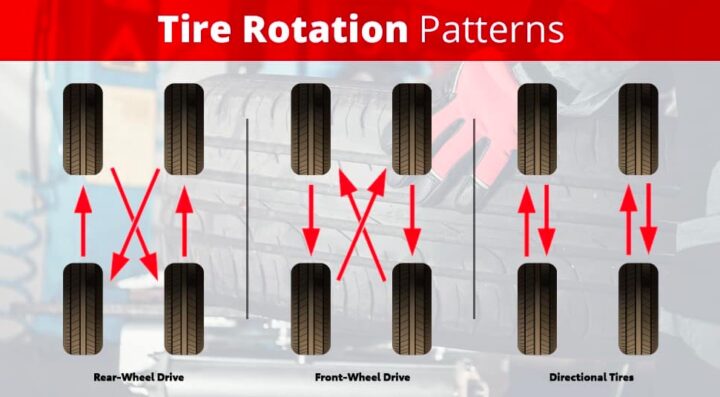image source: https://autostires.com
Welcome to our guide on tire rotation and how often it should be done. Regularly rotating your vehicle’s tires is an important aspect of car maintenance that can improve safety, extend the life of your tires, and save you money in the long run. In this article, we’ll explore the benefits of tire rotation and provide you with a recommended frequency for this important task. By following our advice, you can ensure that your tires are always in top shape and ready to hit the road. So let’s dive in and discover just how often you should be rotating your tires.
Maximizing Tread Life: The Importance of Regular Tire Rotation
Tires are an essential component of any vehicle, providing the necessary traction and stability for safe driving. As with any mechanical part, proper maintenance is crucial to ensure their longevity and performance. One of the most important maintenance tasks for tires is regular rotation.
Tire rotation is the process of moving the tires from one position to another on the vehicle. This means that the front tires are swapped with the rear tires, and vice versa. The specific rotation pattern will vary depending on the type of vehicle and its drivetrain (front-wheel drive, rear-wheel drive, or all-wheel drive).
Regular tire rotation is essential for maximizing the lifespan of your tires. Here are some of the key reasons why:
1. Promotes Even Wear
As you drive, the weight of your vehicle is not distributed evenly on all four tires. The front tires bear more weight due to the engine and transmission, while the rear tires carry less weight. This uneven weight distribution can cause the tires to wear unevenly, with the front tires wearing out faster than the rear tires. Regular rotation helps to distribute this wear and tear evenly, allowing all four tires to wear at a similar rate.
2. Improves Traction and Handling
Unevenly worn tires can affect your vehicle’s traction and handling. When the front tires are more worn than the rear tires, they have less grip on the road, which can lead to decreased traction and handling. This can be especially dangerous in wet or slippery conditions. Regular tire rotation helps to maintain the proper tread depth on all four tires, ensuring optimal traction and handling.
3. Saves Money
Tires are a significant investment, so it makes sense to want to get the most out of them. Regular rotation can help extend the life of your tires, which means you won’t have to replace them as frequently. This can save you money in the long run, as well as prevent the hassle of having to replace tires prematurely.
4. Prevents Irregular Wear Patterns
In addition to uneven wear caused by weight distribution, there are other factors that can cause irregular wear patterns on tires. These include misalignment, underinflation, and overloading. Regular rotation allows for these issues to be caught early and corrected, preventing further damage to the tires.
5. Maintains Warranty Coverage
Many tire manufacturers require regular rotation as part of their warranty coverage. If you neglect to rotate your tires as recommended, it could void your warranty. This could end up costing you more money in the long run if you have to replace your tires prematurely.
How Often Should You Rotate Your Tires?
The general recommendation for tire rotation is every 5,000 to 7,000 miles, or every six months. However, this may vary depending on your vehicle and driving habits. It’s best to consult your vehicle’s owner’s manual or talk to a trusted mechanic for specific recommendations based on your car and driving patterns.
In conclusion, regular tire rotation is crucial for maximizing the lifespan of your tires. It promotes even wear, improves traction and handling, saves money, prevents irregular wear patterns, and maintains warranty coverage. Make sure to stay on top of this essential maintenance task to keep your tires in top condition and ensure a safe and comfortable driving experience.To ensure the longevity and optimal performance of your vehicle’s tires, it is important to schedule regular tire rotations. How often tire rotation should be performed depends on various factors such as your driving habits, vehicle type, and manufacturer recommendations. Generally, it is recommended to have your tires rotated every 5,000 to 8,000 miles or every six months, whichever comes first. By following a regular tire rotation schedule, you can extend the life of your tires and improve the overall safety and efficiency of your vehicle. Don’t neglect this important maintenance task and consult your owner’s manual or a trusted mechanic for specific recommendations on how often tire rotation should be performed for your specific vehicle.
